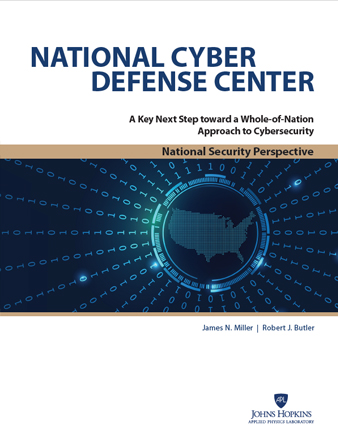
General Nakasone, who assumed his present duties as Commander, U.S. Cyber Command and Director, National Security Agency/Chief, Central Security Service in May 2018, previously commanded U.S. Army Cyber Command from October 2016 – April 2018.
“The future is about information — information dominance,” Nakasone said during the U.S Naval Institute and Armed Forces Communications and Electronics Association annual WEST Conference. For context, Nakasone made the comment about the future after reflecting on key moments in the decade-long existence of CYBERCOM, an organization he has been involved with since the beginning and took leadership of in 2018. Nakasone also leads the NSA and the Central Security Service.
“Too often we think of cyberspace as distinct from the physical fight. That’s not always the case,” Nakasone said, adding that the virtual and the physical are increasingly intertwined. In this way, he said, “events in the virtual battlefield inform and reflect the physical battlefield.”
The theme of “information dominance” seems to reflect broader views about the changing global competitive environment. The US military, more broadly, is modernizing even as it repositions from a two-decade focus on thwarting terrorism to “competing” against “near-peers” China and Russia. Significant aspects of this so-called “near-peer competition” are already playing out in cyberspace.
China has also stressed its goal to control the information environment.
As Breaking D readers know, a recent International Institute for Strategic Studies (IISS) study found the US stands alone as the only tier-one global cyber power. China, the study found, is poised to challenge the US’s current “clear superiority” in cyberspace within the next decade.
“Information dominance” also seems, in part perhaps, related to what Army Maj. Gen. Peter Gallagher, who heads the Army’s network modernization for Futures Command, has called the concept of “decision dominance.” Gallagher’s comments reflect the goal of Joint All Domain Command and Control, or JADC2, characterized as a meta-networking strategy for coordinating military operations across land, sea, air, space, and cyberspace. Timely information for decision-makers and control of the information environment are viewed as integral to the success of JADC2.
In discussing the “threat picture,” Nakasone detailed three familiar themes from recent speeches and congressional testimony. The first is the growing scope of what the US must defend and protect in cyberspace, owing to a “much broader” attack surface, to include weapons systems and an exponentially expanding trove of military data. As Breaking D readers know, data will be a key enabler of JADC2.
The second theme is the scale of cyberattacks, evidenced recently by high-profile cyber campaigns such as SolarWinds, Microsoft Exchange server hacks, and Colonial Pipeline. Nakasone observed that near-peer competitors China and Russia have executed “persistent, malicious campaigns” that shouldn’t be thought of as “episodic.”
“We’re not in Kansas anymore,” Nakasone said, noting US adversaries have invested in and operationalized cyber.
His third theme is how sophisticated the US’s cyber adversaries sometimes prove to be. However, he also noted, sometimes they’ve found success with simpler techniques. The key is to recognize how adversaries are adapting and to engage accordingly.
Nakasone pointed to three tasks he views as important going forward. First is the hard work of integrating cyber across the military, government, allies, and partners. The second is strengthening cyber defenses. The third is continued development of a pool of domestic cyber talent by finding ways to attract, train, and retain a generation of elite cyber warriors.
This story first appeared in Breaking Defense, https://breakingdefense.com/2021/06/the-future-is-about-information-dominance-gen-nakasone/?utm_campaign=Breaking%20News&utm_medium=email&_hsmi=137243160&_hsenc=p2ANqtz-8bzgj0ycFLIbCaN8kjQ4PrjqbBPOV7L2sJLj6sOTFbvBt1MvFbFxJ1Qw9gOzVKflLdMrNMgkdCn9vInx5vIP-Q-ve88g&utm_content=137243160&utm_source=hs_email

